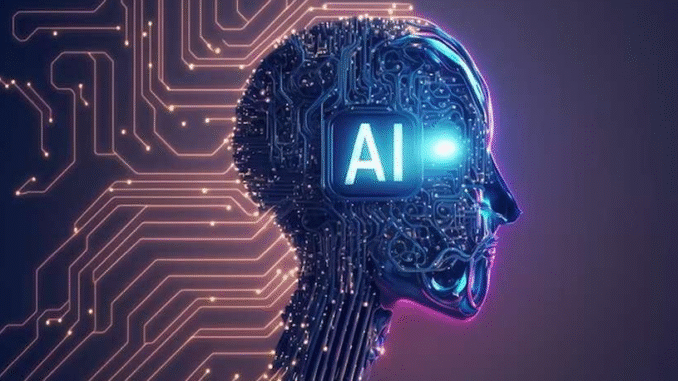
How Artificial Intelligence Is Transforming Everyday Life
Artificial Intelligence (AI) is no longer just a futuristic concept or the stuff of science fiction. It has become a fundamental part of modern life, reshaping how we work, communicate, shop, learn, and even care for our health. From voice assistants on smartphones to personalized recommendations on Netflix, AI is deeply embedded in our daily routines.
In this article, we’ll explore how AI is transforming everyday life, offering both convenience and innovation. Whether you realize it or not, AI is everywhere — and it’s making life smarter, faster, and more efficient.
What Is Artificial Intelligence?
Artificial Intelligence refers to the development of computer systems that can perform tasks that typically require human intelligence. These tasks include learning, reasoning, problem-solving, understanding language, and recognizing images or speech.
AI works through technologies like:
- Machine Learning (ML): Algorithms that learn from data and improve over time.
- Natural Language Processing (NLP): The ability to understand and generate human language.
- Computer Vision: Enabling machines to interpret and analyze visual content.
- Robotics and Automation: Physical systems that carry out human-like tasks.
These AI systems can be narrow (designed for specific tasks) or general (capable of performing a wide range of functions). Most current applications use narrow AI, but their impact is widespread and growing.
AI in Communication and Daily Interaction
1. Voice Assistants and Smart Devices
AI powers the voice assistants many of us use every day — such as Siri, Alexa, Google Assistant, and Cortana. These tools can:
- Set reminders
- Play music
- Control smart home devices
- Answer questions
- Provide directions
Smart speakers, thermostats, doorbells, and lights use AI to learn user preferences and create personalized experiences, making homes more convenient and energy-efficient.
2. Language Translation and Text Prediction
AI-driven tools like Google Translate and DeepL enable seamless communication across languages. Smartphones also use AI to predict text, autocorrect spelling, and understand voice commands, making messaging faster and more intuitive.
AI in Entertainment and Media
3. Personalized Recommendations
Platforms like Netflix, Spotify, YouTube, and Amazon Prime use AI algorithms to analyze viewing or listening habits. Based on your preferences, AI suggests movies, music, or shows you’re likely to enjoy — keeping users engaged and satisfied.
4. Content Creation and Editing
AI tools now assist in generating written content, editing videos, designing graphics, and even composing music. Apps like Canva and Adobe use AI features to streamline the creative process for beginners and professionals alike.
AI in Transportation and Navigation
5. Smart Navigation Systems
AI enhances navigation apps such as Google Maps and Waze by analyzing real-time traffic conditions and suggesting the fastest routes. These systems can adapt dynamically to traffic jams, road closures, or accidents.
6. Autonomous Vehicles
While fully self-driving cars are still in development, AI already plays a major role in modern vehicles:
- Lane detection
- Automatic emergency braking
- Adaptive cruise control
- Parking assistance
Companies like Tesla, Waymo, and Cruise are leading the push toward fully autonomous vehicles, expected to become more common by the end of the decade.
AI in Healthcare
7. Medical Diagnosis and Imaging
AI helps doctors analyze complex medical data such as X-rays, MRIs, and pathology slides. Tools like IBM Watson Health and Google DeepMind assist in early diagnosis of diseases like cancer, diabetes, and eye disorders.
8. Virtual Health Assistants
Chatbots and virtual health apps use AI to provide medical advice, schedule appointments, and remind patients to take medications. These tools enhance access to healthcare and reduce the burden on medical staff.
9. Remote Monitoring and Wearables
Smartwatches and fitness trackers like Apple Watch or Fitbit use AI to monitor heart rate, sleep patterns, and physical activity. AI algorithms detect abnormal patterns and can alert users to potential health risks.
AI in Education and Learning
10. Personalized Learning Platforms
AI adapts educational content to fit each learner’s pace, style, and level of understanding. Platforms like Khan Academy, Duolingo, and Coursera use AI to customize lessons and improve student engagement.
11. Automated Grading and Feedback
Teachers and educators use AI tools to grade multiple-choice tests, analyze essays, and provide instant feedback. This reduces manual workload and speeds up the learning process.
12. Tutoring and Language Learning
AI-driven tutoring platforms offer one-on-one instruction through chatbots or virtual agents. Language learning apps use voice recognition and adaptive quizzes to tailor lessons to individual users.
AI in Shopping and E-Commerce
13. Product Recommendations
E-commerce giants like Amazon, eBay, and Alibaba use AI to suggest products based on browsing history, purchase behavior, and customer preferences. These algorithms drive sales and enhance user satisfaction.
14. Customer Support Chatbots
AI-powered chatbots can handle common customer inquiries, process returns, and even troubleshoot problems. They are available 24/7 and can serve thousands of customers simultaneously.
15. Visual Search and Augmented Reality
Shoppers can now take a picture of a product and find similar items online using AI visual search tools. Some retailers also offer AR fitting rooms, allowing users to “try on” clothes or see how furniture fits in their homes.
AI in Work and Productivity
16. Smart Assistants and Scheduling
AI assistants can schedule meetings, manage calendars, and send reminders. Tools like Google Calendar, Microsoft Outlook, and Notion AI streamline workflow and reduce administrative burdens.
17. Document Creation and Editing
AI can draft emails, generate reports, and summarize documents. Microsoft Word’s “Editor” feature and Google Docs’ smart suggestions are practical examples of AI enhancing productivity.
18. Recruitment and HR Tools
AI helps companies sift through job applications, conduct initial screenings, and identify top candidates based on data. This reduces hiring time and ensures a better match between employers and job seekers.
AI in Finance and Banking
19. Fraud Detection
AI systems monitor financial transactions in real-time to detect unusual patterns or potential fraud. Banks use these tools to protect customer data and prevent financial losses.
20. Robo-Advisors and Investment Tools
Robo-advisors like Betterment and Wealthfront use AI to provide financial advice, build investment portfolios, and automatically adjust strategies based on market trends and user goals.
21. Personalized Budgeting
Apps like Mint, YNAB (You Need A Budget), and Cleo use AI to analyze spending habits and provide tailored budgeting tips, helping users save money and make smarter financial decisions.
Ethical Considerations and Challenges
While AI brings many benefits, it also raises important questions:
- Privacy: How is personal data collected and used?
- Bias: Are AI systems making fair decisions for all groups?
- Job Displacement: Will AI replace human workers in certain industries?
To address these challenges, governments, organizations, and developers are working on frameworks for ethical AI, ensuring transparency, accountability, and fairness.
Conclusion
Artificial Intelligence is no longer an emerging technology — it is a powerful force that is transforming everyday life in meaningful ways. From how we communicate to how we shop, work, and stay healthy, AI is enhancing efficiency, personalization, and convenience across every aspect of society.
As AI continues to evolve, we must also adapt — not only to embrace its benefits but to understand its responsibilities. By using AI wisely and ethically, we can build a future where technology uplifts and empowers people around the world.

